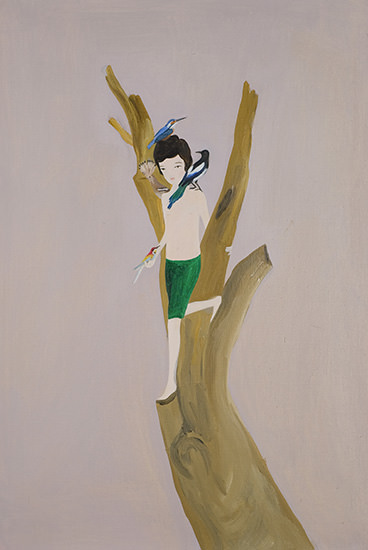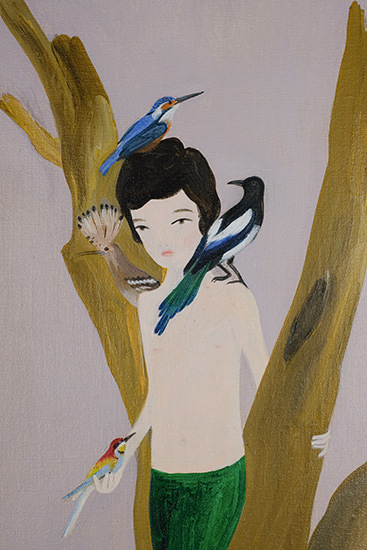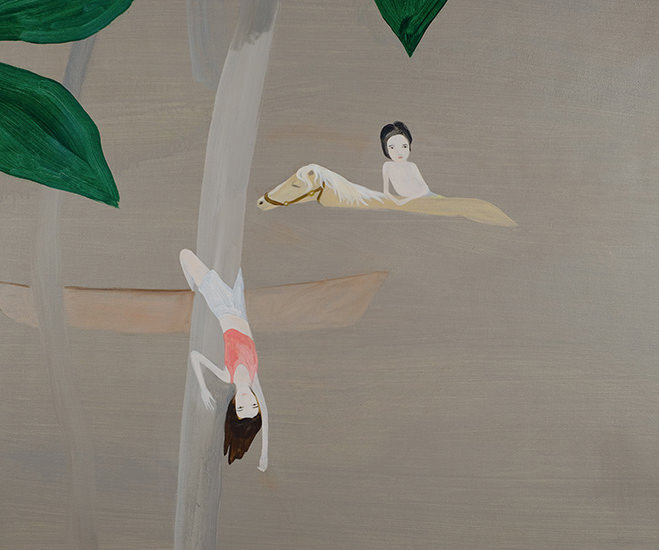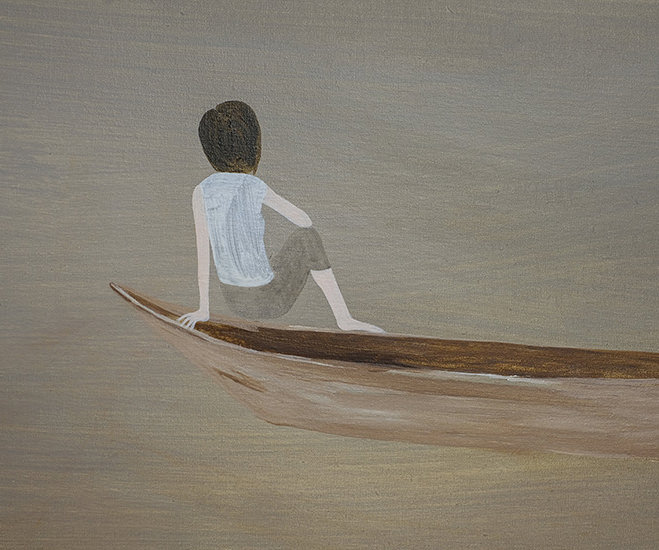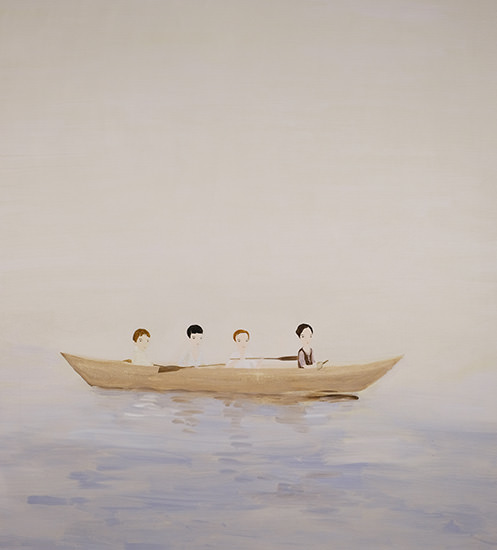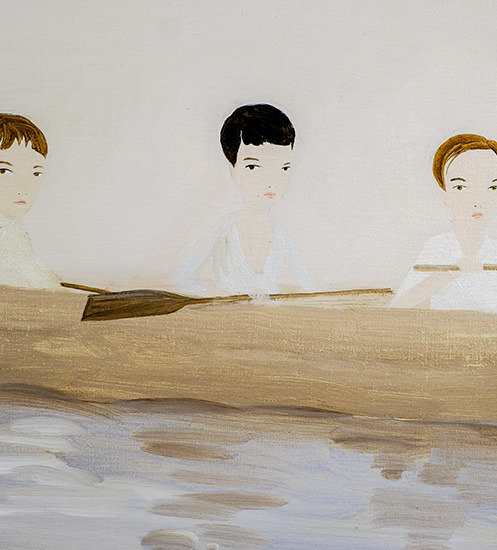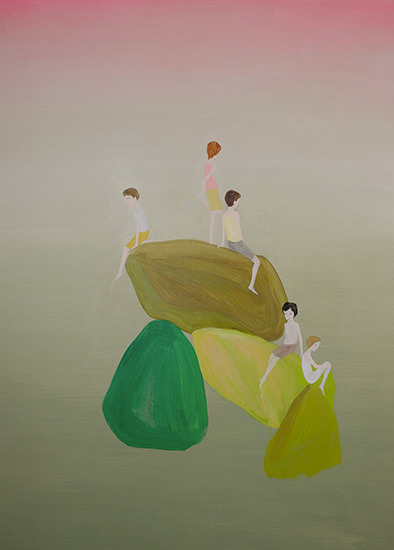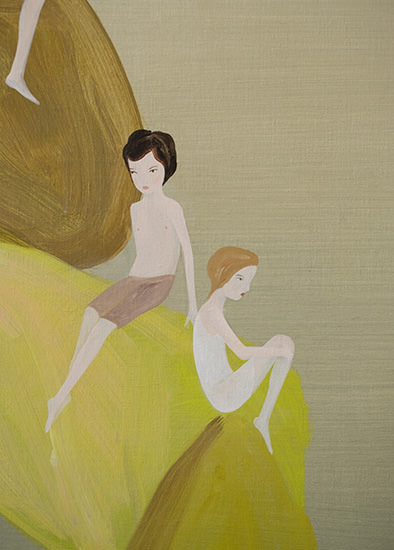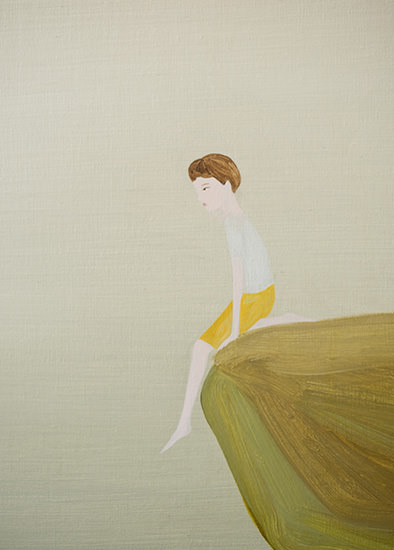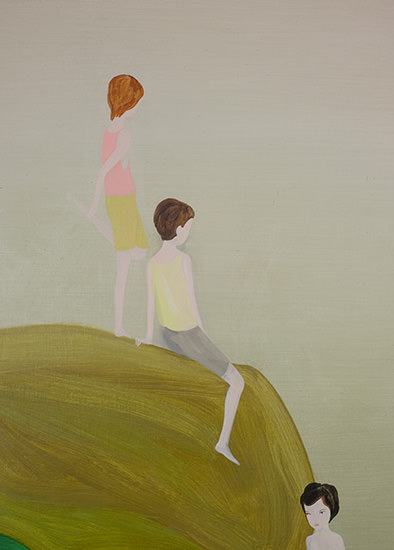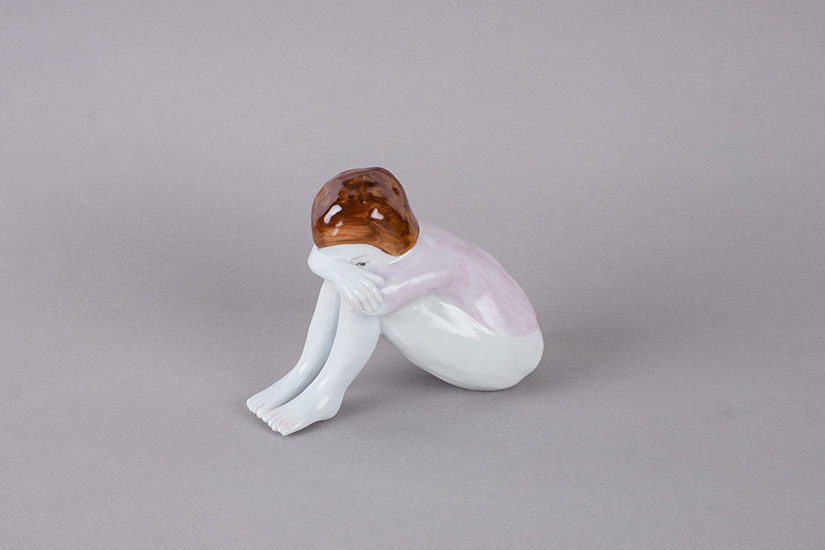
Sola porcelain (unique), 15x12x16 cm, 2016
Darwin, 74 x47cm, acrylic on linen 2017
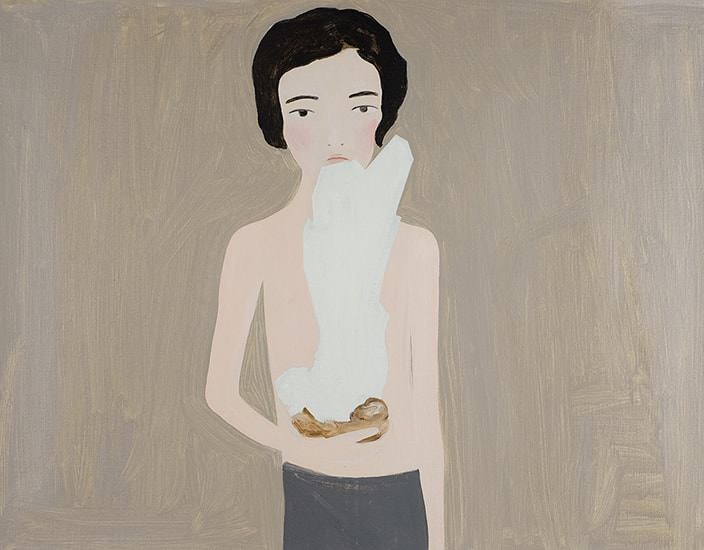
Quarzo, acrylic on linen, 67,5 x 82,5 cm, 2016
Upupa epops, 69x47 cm, acrylic on linen, 2017 + detail
Rio, 175 x 200 cm, acrylic on linen, 2017 + detail
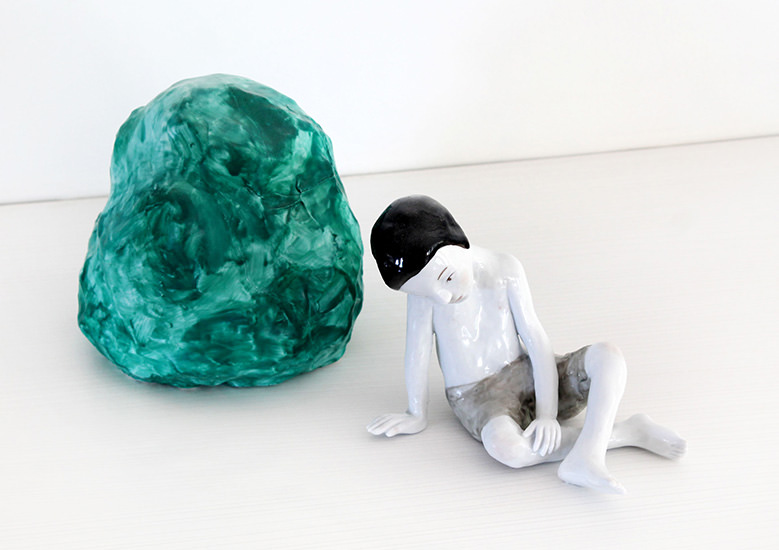
Narciso porcelain (unique), 17x15x14cm, 17x16x18cm, 2015
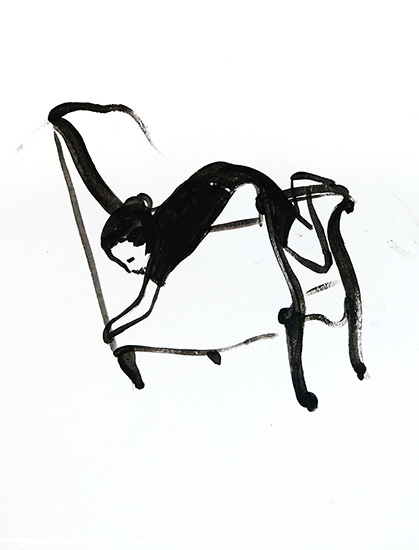
sillon , pencil on paper, 30 x 45cm, 2017
Paseo, 135x120 cm, acrylic on linen, 2017
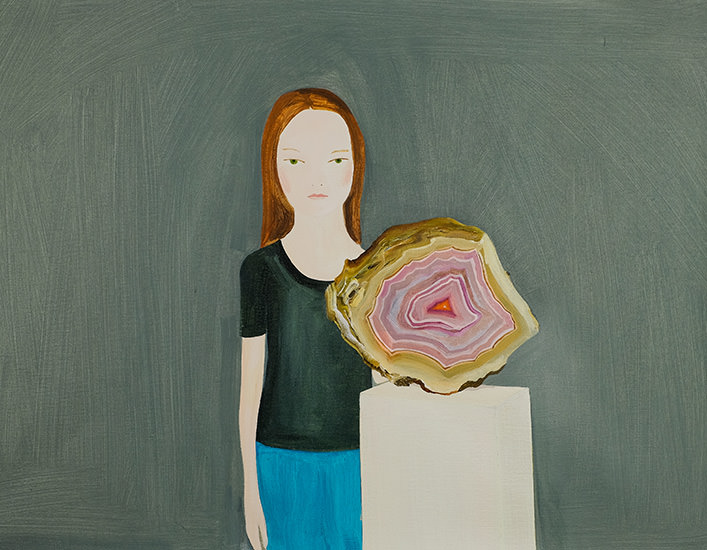
Agata, 51x74 cm, acrylic on linen, 2017
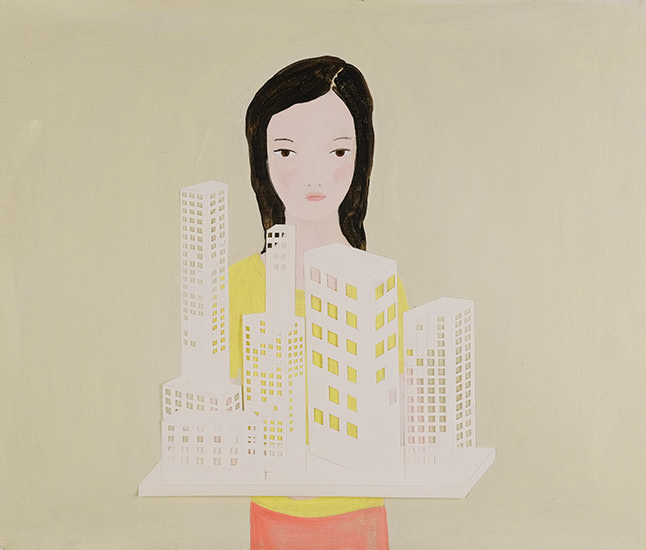
Arquitecta, acrylic and paper on linen, 67,5x82,5 cm, 2016
Rocas, 200x165 cm, acrylic on linen 2017 + detail
Nunca me abandones
¿Cómo lograr que el retrato o el paisaje, géneros tan visitados como atemporales, resulten indiscutiblemente contemporáneos? ¿Cómo superar el balanceo desquiciante entre lo real y lo ideal, entre el ser y el parecer en el que suelen quedar atrapados y menoscabar, así, su eficacia?Mirando las pinturas de Carolina Antich, la pregunta que cabe formularse es menos por qué pinta o para qué pinta, que para quién pinta. La hipótesis sería que lo hace para sí, pero no como ejercicio psicológico-terapéutico o de autoconocimiento, sino como la investigación persistente de una artista empeñada en averiguar qué es lo que queda de un cuadro ¿figurativo? cuando se lo despoja de la perspectiva, de la composición, del detalle. Pero entonces, ¿cuánto de abstractos tienen los cuadros figurativos de Antich? ¿Acaso sus obras vienen a reconciliar una idea muy personal sobre la abstracción con otra particularísima sobre la figuración?
No es difícil imaginar a nuestra pintora en su taller de La Giudecca, en Venecia, siguiendo un protocolo artístico que contraría el proceso natural y progresivo que conduce a la obra terminada. Carolina parece intervenir y enloquecer ese proceso para conseguir lo que persigue: dejar sólo lo que identifica como el absoluto esencial. Quizás empieza por pintar un cuadro con un fondo de deliberada incomodidad cromática, para atacar luego a personajes y objetos simples o genéricos que, dotados de detalles cuidados, habitan las escenas, los paisajes, sus paisajes. Este es el momento en el que normalmente la obra se daría por finalizada. Sin embargo, podríamos conjeturar que en realidad éste es el instante en el que Antich comienza su verdadera batalla pictórica, calculada y sin titubeos. El momento en el que emprende el desgaste sucesivo de las capas de acrílico que antes pintó, para interrumpir la acción recién cuando alcanza la última. Es entonces cuando tal vez abandona el fondo para dedicarse a los personajes, disolver sus rasgos y particularidades y enfatizar sus miradas lánguidas y perplejas. Antich nos deja desamparados para que nosotros, su público, enfrentemos así "la pintura", a secas y sin eufemismos. ¿Cómo explicar, si no, tanta economía pictórica en los fondos, tanta impiadosa ambigüedad en los personajes frontalmente retratados, tanto paisaje desolado? Pero, sobre todo, ¿cómo explicar de otro modo que a la artista le tome tanto tiempo pintar cada una de sus obras?
Realizadas durante los últimos tres años, las pinturas de Quarzo exaltan doblemente la bidimensionalidad —primero en la superficie de la tela y después en lo representado— para trazar su urdimbre simbólica siguiendo el programa que la artista impone. Lo limitado del repertorio es parte de ese programa, su clave: cada una de las obras convoca a jóvenes que parecen no conectar entre sí, que viajan a la deriva —una deriva emocional—, incómodos y ambiguos, pasivos y sin deseo. Son cyborgs a la Ishiguro, distantes de fatalidades y aflicciones que, montados en una roca, navegando en una canoa o mirando pasar el agua, se revelan como sujetos abandonados fatalmente a su destino. Criaturas que tratan de tender un puente para quedarse, aunque sea un rato más, de este lado. Sonia Becce
Abril 2017
Never let me go
How is it possible to make genres as often seen and timeless as the portrait and the landscape indisputably contemporary? How to go beyond the maddening back and forth between the real and the ideal, between being and seeming, in which those genres are so often trapped to the detriment of their efficacy?Before Carolina Antich's paintings, the question that comes to mind is less why or for what purpose she paints than for whom. One hypothesis might be that she paints for herself, but not as a psychological-therapeutic exercise or an exercise in self-knowledge, but rather as the dogged research of an artist determined to find out what remains of a painting (a figurative painting?) when it is rid of perspective, of composition, of detail. But how abstract are Antich's figurative paintings, then? Perhaps her works are a means to reconcile a very personal idea of abstraction and another, equally particular, idea of figuration.
It's not hard to imagine our painter in her studio in La Giudecca, Venice, carefully adhering to an artistic protocol that goes against the natural and progressive process that leads to a finished work of art. Carolina appears to interrupt and to madden that process to get what she is after: leave in the painting only what she deems absolutely essential. Perhaps she starts out painting a picture whose background is deliberately jarring in terms of color to then attack characters and objects that, though simple or generic, are rich in painstaking detail, characters and objects that inhabit scenes, landscapes, her landscapes. That is when, normally, the work would be considered finished. But, it would seem, it is the instant when, in Antich's case, the truly pictorial battle is launched—a calculated battle waged without a trace of hesitation. It is at that juncture that she begins to wear away the layers of acrylic paint that she had painted, stopping only when she has reached the final layer. Only then does she leave the background behind to turn to the figures, blurring their traits and particularities to emphasize instead the languid and perplexed look in their eyes. Antich renders us defenseless so that we, her viewers, are confronted with "the painting" itself, with no euphemisms. Otherwise, how to explain such pictorial economy in the background, such unrelenting ambiguity in the frontally portrayed characters, such desolation in the landscape? But, mostly, how else to explain that it takes the artist so long to paint each of her works?
Produced over the course of the last three years, the paintings in Quarzo extol two-dimensionality doubly—first on the surface of the canvas and then in the image represented—to devise their symbolic argument according to an agenda determined by the artist. The reduced repertoire is part of that agenda—indeed, its key: each one of these works depicts young people who seem wholly incapable of connecting to one another, who—vexed and ambiguous, passive and with no desire—wander aimlessly, emotionally adrift. At a distance from any fatality or affliction, they are Ishiguro-like cyborgs; on top of a rock, sailing a canoe, or watching the water go by, they are revealed to be subjects that have given into their fate, creatures that try to build a bridge in order to stay, if just for a little while longer, on this side. Sonia Becce
April 2017
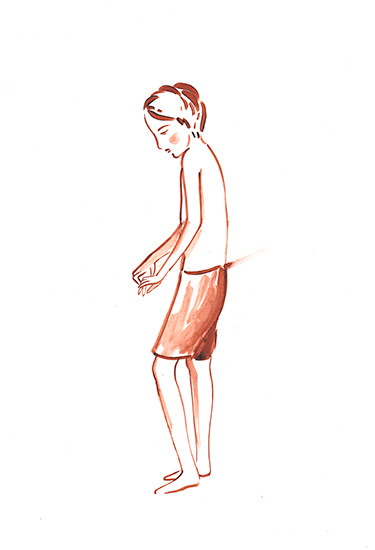
sin titulo, oleo su carta , 45 x 30 cm, 2017



